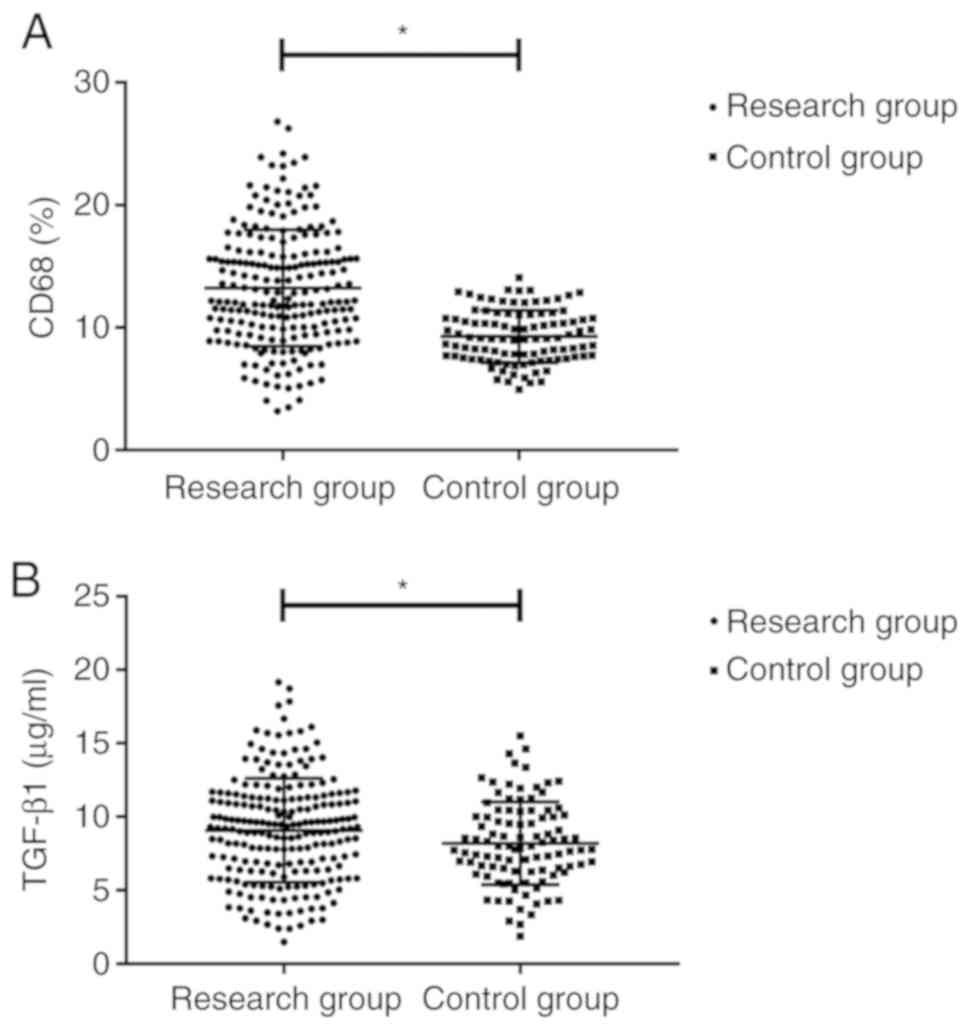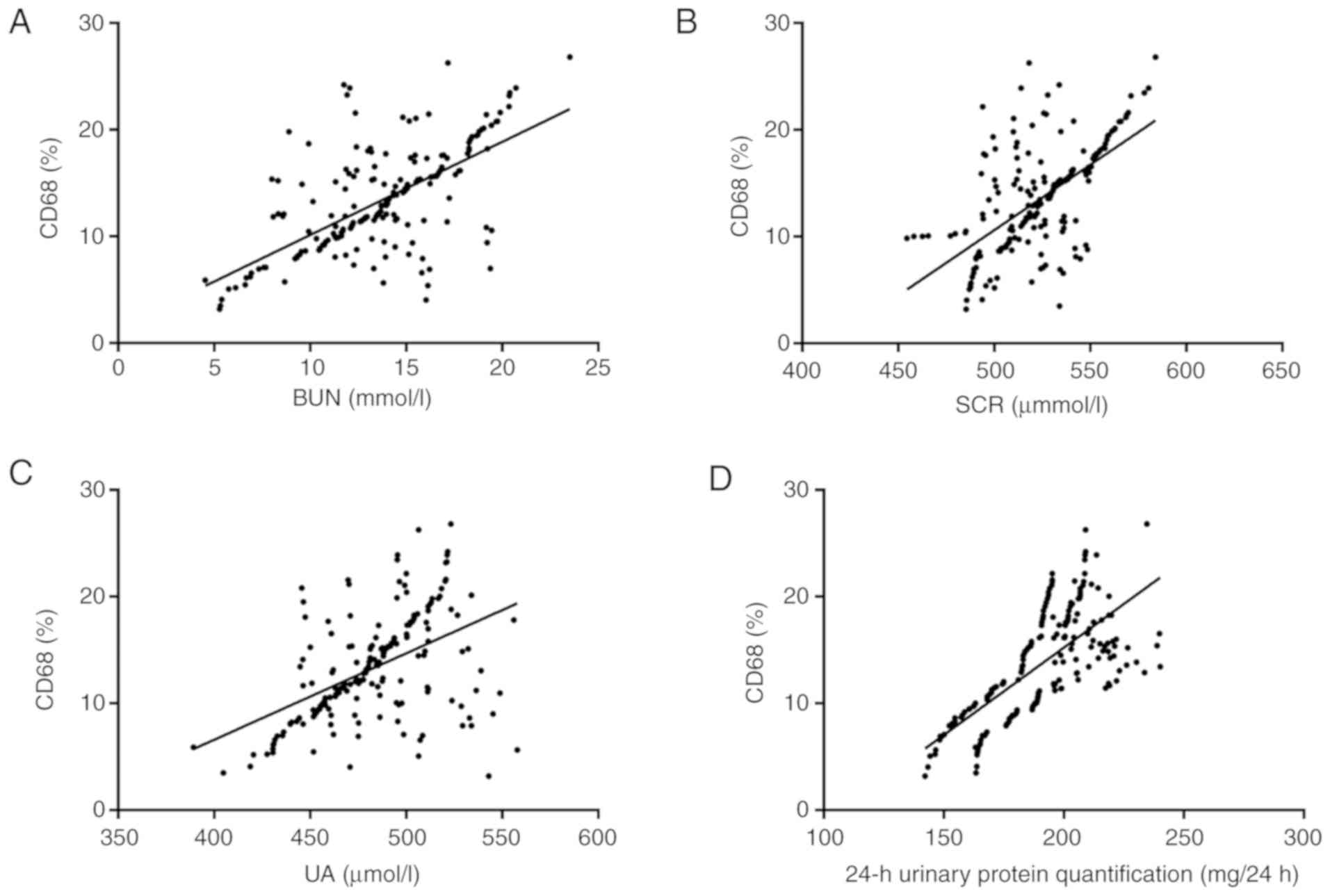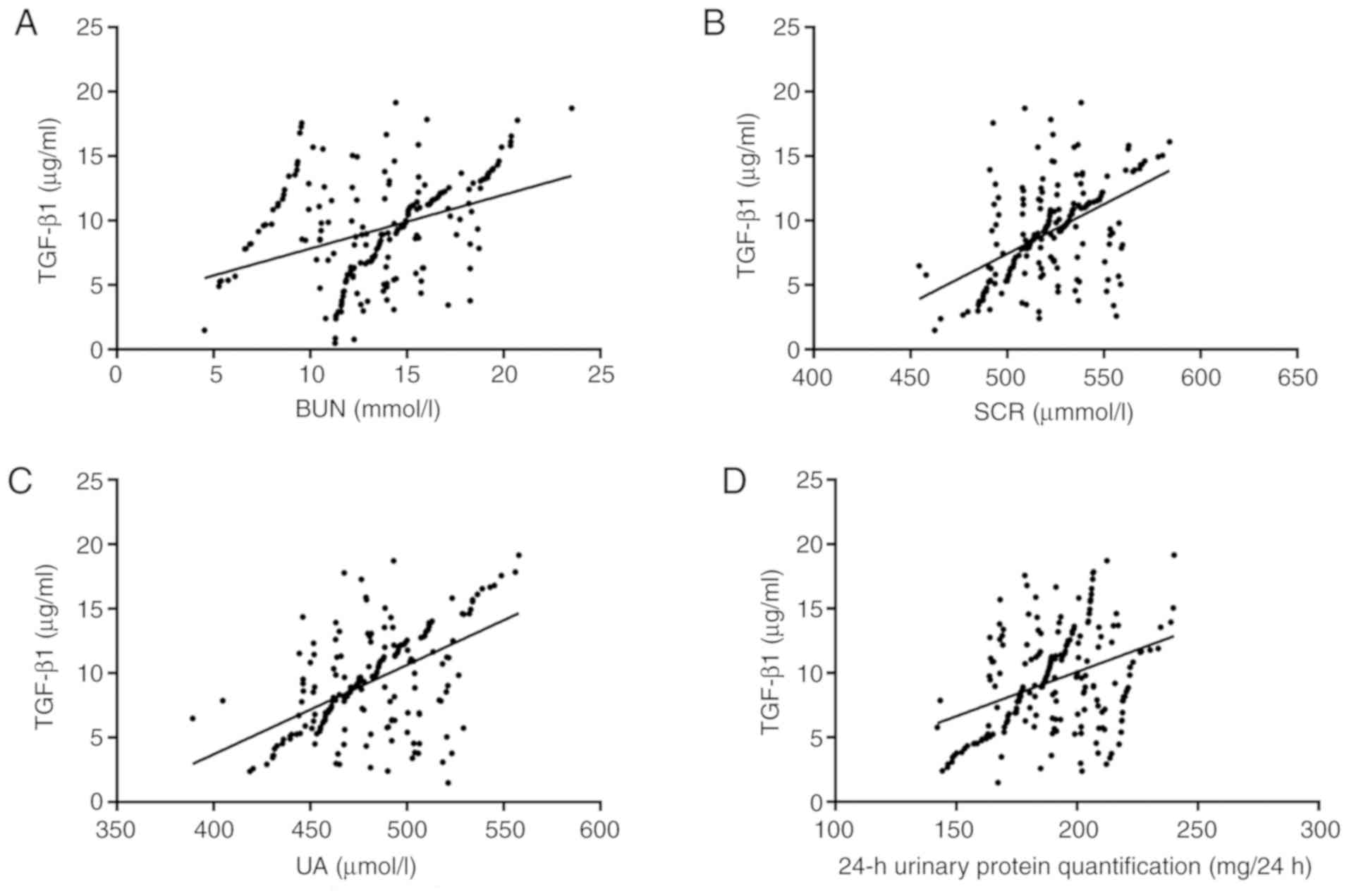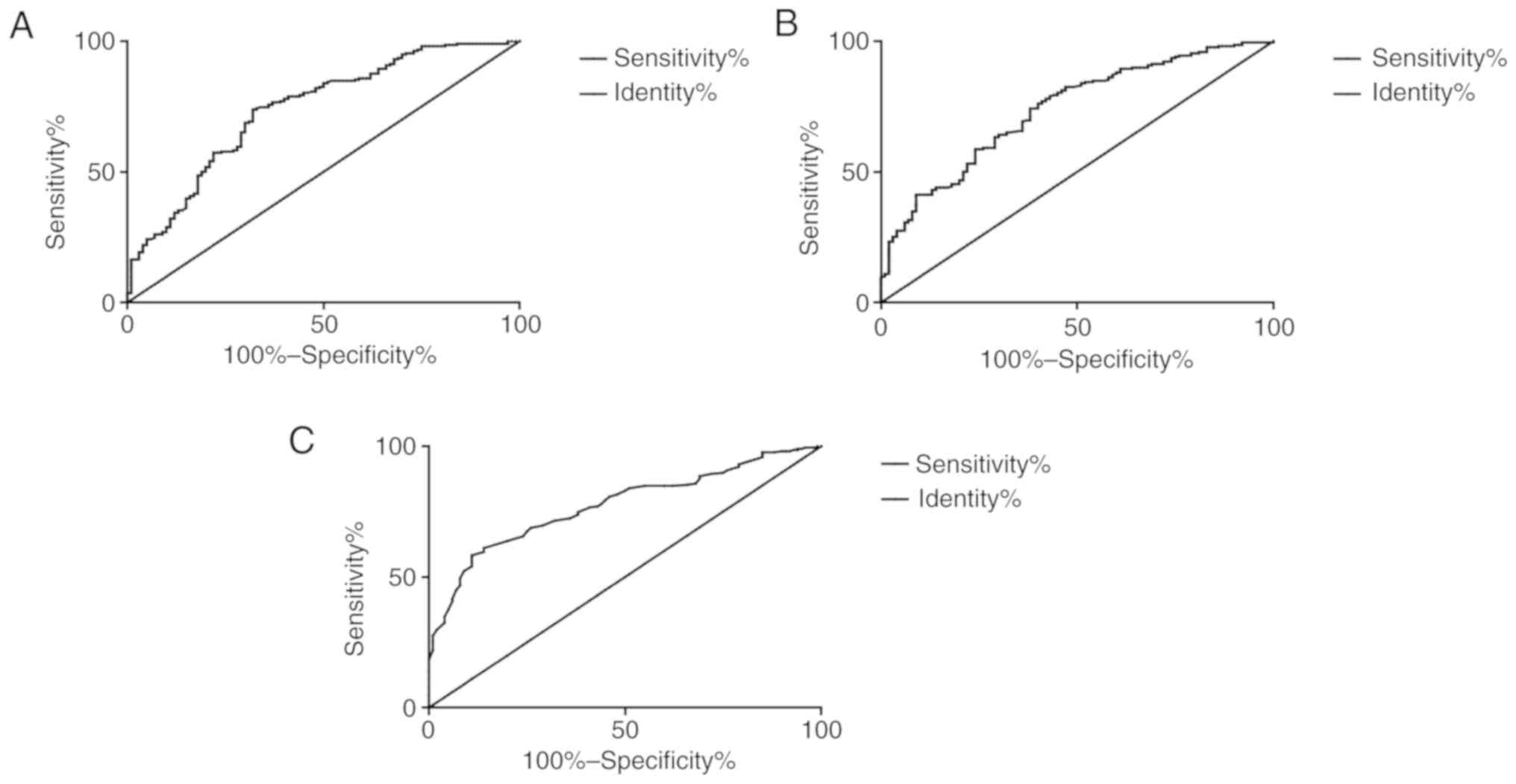|
1
|
Herrera-Caceres JO, Finelli A and Jewett
MAS: Renal tumor biopsy: Indicators, technique, safety, accuracy
results, and impact on treatment decision management. World J Urol.
37:437–443. 2019.PubMed/NCBI View Article : Google Scholar
|
|
2
|
Zhu P, Zhou FD, Wang SX, Zhao MH and Wang
HY: Increasing frequency of idiopathic membranous nephropathy in
primary glomerular disease: A 10-yearrenal biopsy study from a
single Chinese nephrology centre. Nephrology (Carlton). 20:560–566.
2015.PubMed/NCBI View Article : Google Scholar
|
|
3
|
Thakkar UG, Vanikar AV and Trivedi HL:
Stem cell therapy: An emerging modality in glomerular diseases.
Cytotherapy. 19:333–348. 2017.PubMed/NCBI View Article : Google Scholar
|
|
4
|
Lees JS, McQuarrie EP and Mackinnon B:
Renal biopsy: It is time for pragmatism and consensus. Clin Kidney
J. 11:605–609. 2018.PubMed/NCBI View Article : Google Scholar
|
|
5
|
Xu DM, Chen M, Zhou FD and Zhao MH: Risk
Factors for severe bleeding complications in percutaneous renal
biopsy. Am J Med Sci. 353:230–235. 2017.PubMed/NCBI View Article : Google Scholar
|
|
6
|
Moledina DG, Hall IE, Thiessen-Philbrook
H, Reese PP, Weng FL, Schröppel B, Doshi MD, Wilson FP, Coca SG and
Parikh CR: Performance of serum creatinine and kidney injury
biomarkers for diagnosing histologic acute tubular injury. Am J
Kidney Dis. 70:807–816. 2017.PubMed/NCBI View Article : Google Scholar
|
|
7
|
Ling C, Liu X, Shen Y, Chen Z, Fan J,
Jiang Y and Meng Q: Urinary CD80 levels as a diagnostic biomarker
of minimal change disease. Pediatr Nephrol. 30:309–316.
2015.PubMed/NCBI View Article : Google Scholar
|
|
8
|
Lee AH, Ledderose C, Li X, Slubowski CJ,
Sueyoshi K, Staudenmaier L, Bao Y, Zhang J and Junger WG: Adenosine
triphosphate release is required for toll-like receptor-induced
monocyte/macrophage activation, inflammasome signaling,
interleukin-1β production, and the host immune response to
infection. Crit Care Med. 46:e1183–e1189. 2018.PubMed/NCBI View Article : Google Scholar
|
|
9
|
Liang S, Cai J, Li Y and Yang R:
1,25-Dihydroxy-Vitamin D3 induces macrophage polarization to M2 by
upregulating T-cell Ig-mucin-3 expression. Mol Med Rep.
19:3707–3713. 2019.PubMed/NCBI View Article : Google Scholar
|
|
10
|
Chistiakov DA, Killingsworth MC,
Myasoedova VA, Orekhov AN and Bobryshev YV: CD68/macrosial in: Not
just a histochemical marker. Lab Invest. 97:4–13. 2016.PubMed/NCBI View Article : Google Scholar
|
|
11
|
Ooshima A, Park J and Kim SJ:
Phosphorylation status at Smad3 linker region modulates
transforming growth factor-β-induced epithelial-mesenchymal
transition and cancer progression. Cancer Sci. 110:481–488.
2019.PubMed/NCBI View Article : Google Scholar
|
|
12
|
Shi Q and Chen YG: The functional switch
of TGF-β signaling in breast cancer. Oncotarget. 10:1604–1605.
2019.PubMed/NCBI View Article : Google Scholar
|
|
13
|
Trajceska L, Severova-Andreevska G,
Dzekova-Vidimliski P, Nikolov I, Selim G, Spasovski G,
Rambabova-Busletik I, Ristovska V, Grcevska L, Grcevska L and
Sikole A: Complica-tions and risks of percutaneous renal biopsy.
Open Access Maced J Med Sci. 7:992–995. 2019.PubMed/NCBI View Article : Google Scholar
|
|
14
|
Rakaee M, Busund LR, Jamaly S, Paulsen EE,
Richardsen E, Andersen S, Al-Saad S, Bremnes RM, Donnem T and
Kilvaer TK: Prognostic value of macrophage phenotypes in resectable
non-small cell lung cancer assessed by multiplex
immunohisto-chemistry. Neoplasia. 21:282–293. 2019.PubMed/NCBI View Article : Google Scholar
|
|
15
|
Doi K, Nishida O, Shigematsu T, Sadahiro
T, Itami N, Iseki K, Yuzawa Y, Okada H, Koya D, Kiyomoto H, et al:
The Japanese clinical practice guideline for acute kidney injury
2016. Clin Exp Nephrol. 22:985–1045. 2018.PubMed/NCBI View Article : Google Scholar
|
|
16
|
Nester CM and Falk RJ: Introduction:
Glomerular disease update for the clinician. Clin J Am Soc Nephrol.
11:1662–1663. 2016.PubMed/NCBI View Article : Google Scholar
|
|
17
|
Ishigami J and Matsushita K: Clinical
epidemiology of infectious disease among patients with chronic
kidney disease. Clin Exp Nephrol. 23:437–447. 2019.PubMed/NCBI View Article : Google Scholar
|
|
18
|
Conley SM, Abais JM, Boini KM and Li PL:
Inflammasome activation in chronic glomerular diseases. Curr Drug
Targets. 18:1019–1029. 2017.PubMed/NCBI View Article : Google Scholar
|
|
19
|
Noris M and Remuzzi G: Glomerular diseases
dependent on complement activation, including atypical hemolytic
uremic syndrome, membranoproliferative glomerulonephritis, and C3
glomerulopathy: Core curriculum 2015. Am J Kidney Dis. 66:359–375.
2015.PubMed/NCBI View Article : Google Scholar
|
|
20
|
Moledina DG, Cheung B, Kukova L, Luciano
RL, Peixoto AJ, Wilson FP, Alfano S and Parikh CR: A survey of
patient attitudes toward participation in biopsy-based kidney
research. Kidney Int Rep. 3:412–416. 2017.PubMed/NCBI View Article : Google Scholar
|
|
21
|
Wang L, Zhang C, Zhang Z, Han B, Shen Z,
Li L, Liu S, Zhao X, Ye F and Zhang Y: Specific clinical and immune
features of CD68 in glioma via 1,024 samples. Cancer Manag Res.
10:6409–6419. 2018.PubMed/NCBI View Article : Google Scholar
|
|
22
|
Li Z, Maeda D, Yoshida M, Umakoshi M,
Nanjo H, Shiraishi K, Saito M, Kohno T, Konno H, Saito H, et al:
The intratumoral distribution influences the prognostic impact of
CD68-and CD204-positive macrophages in non-small cell lung cancer.
Lung Cancer. 123:127–135. 2018.PubMed/NCBI View Article : Google Scholar
|
|
23
|
Ngoh CLY, Wee BBK and Wong WK: Lumbar
Artery bleed as a complication of percutaneous renal biopsy and a
proposed workflow for massive bleeding. Case Rep Nephrol Dial.
8:268–276. 2018.PubMed/NCBI View Article : Google Scholar
|
|
24
|
Dias CB, Malafronte P, Lee J, Resende A,
Jorge L, Pinheiro CC, Malheiros D and Woronik V: Role of renal
expression of CD68 in the long-term prognosis of proliferative
lupus nephritis. J Nephrol. 30:87–94. 2017.PubMed/NCBI View Article : Google Scholar
|
|
25
|
Guillén-Gómez E, Dasilva I, Silva I, Arce
Y, Facundo C, Ars E, Breda A, Ortiz A, Guirado L, Ballarín JA, et
al: Early macrophage infiltration and sustained inflammation in
kidneys from deceased donors are associated with long-term renal
function. Am J Transplant. 17:733–743. 2017.PubMed/NCBI View Article : Google Scholar
|
|
26
|
Kang JH, Jung MY, Yin X, Andrianifahanana
M, Hernandez DM and Leof EB: Cell-penetrating peptides selectively
targeting SMAD3 inhibit profibrotic TGF-β signaling. J Clin Invest.
127:2541–2554. 2017.PubMed/NCBI View
Article : Google Scholar
|
|
27
|
Zeng F, Miyazawa T, Kloepfer LA and Harris
RC: ErbB4 deletion accelerates renal fibrosis following renal
injury. Am J Physiol Renal Physiol. 314:F773–F787. 2018.PubMed/NCBI View Article : Google Scholar
|
|
28
|
Hu HH, Chen DQ, Wang YN, Feng YL, Cao G,
Vaziri ND and Zhao YY: New insights into TGF-β/Smad signaling in
tissue fibrosis. Chem Biol Interact. 292:76–83. 2018.PubMed/NCBI View Article : Google Scholar
|
|
29
|
Fukuda A, Minakawa A, Sato Y, Iwakiri T,
Iwatsubo S, Komatsu H, Kikuchi M, Kitamura K, Wiggins RC and
Fujimoto S: Urinary podocyte and TGF-β1 mRNA as markers for disease
activity and progression in anti-glomerular basement membrane
nephritis. Nephrol Dial Transplant. 32:1818–1830. 2017.PubMed/NCBI View Article : Google Scholar
|
|
30
|
Ostermann M and Joannidis M: Acute kidney
injury 2016: Diagnosis and diagnostic workup. Crit Care.
20(299)2016.PubMed/NCBI View Article : Google Scholar
|
|
31
|
Mehta T, Buzkova P, Kizer JR, Djousse L,
Chonchol M, Mukamal KJ, Shlipak M, Ix JH and Jalal D: Higher plasma
transforming growth factor (TGF)-β is associated with kidney
disease in older community dwelling adults. BMC Nephrol.
18(98)2017.PubMed/NCBI View Article : Google Scholar
|


















